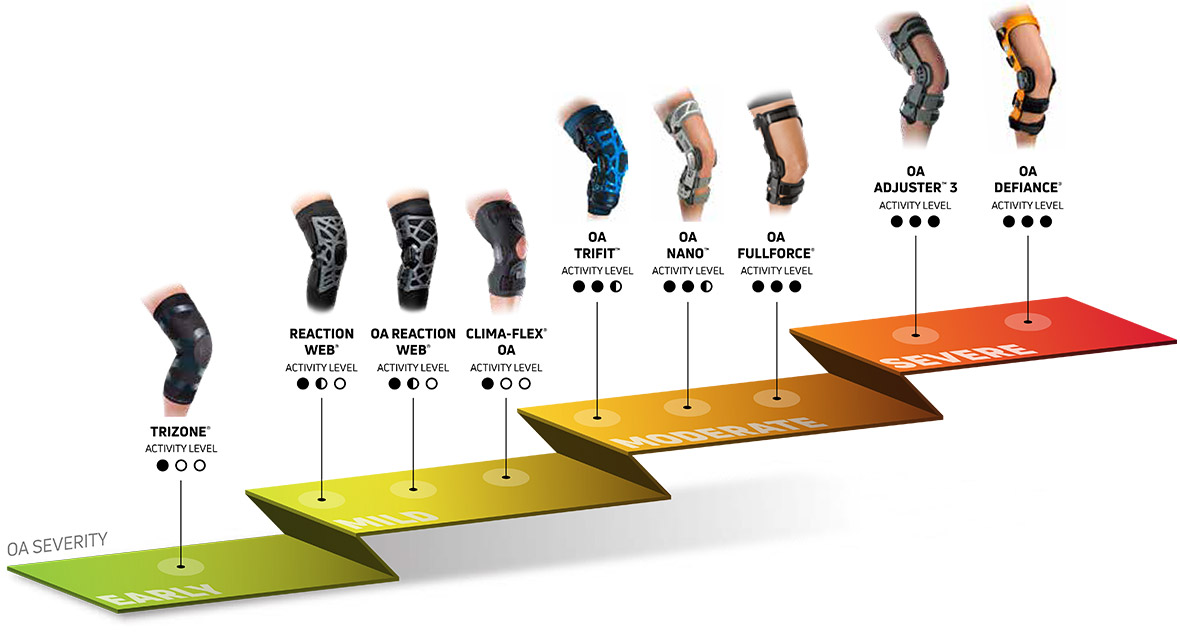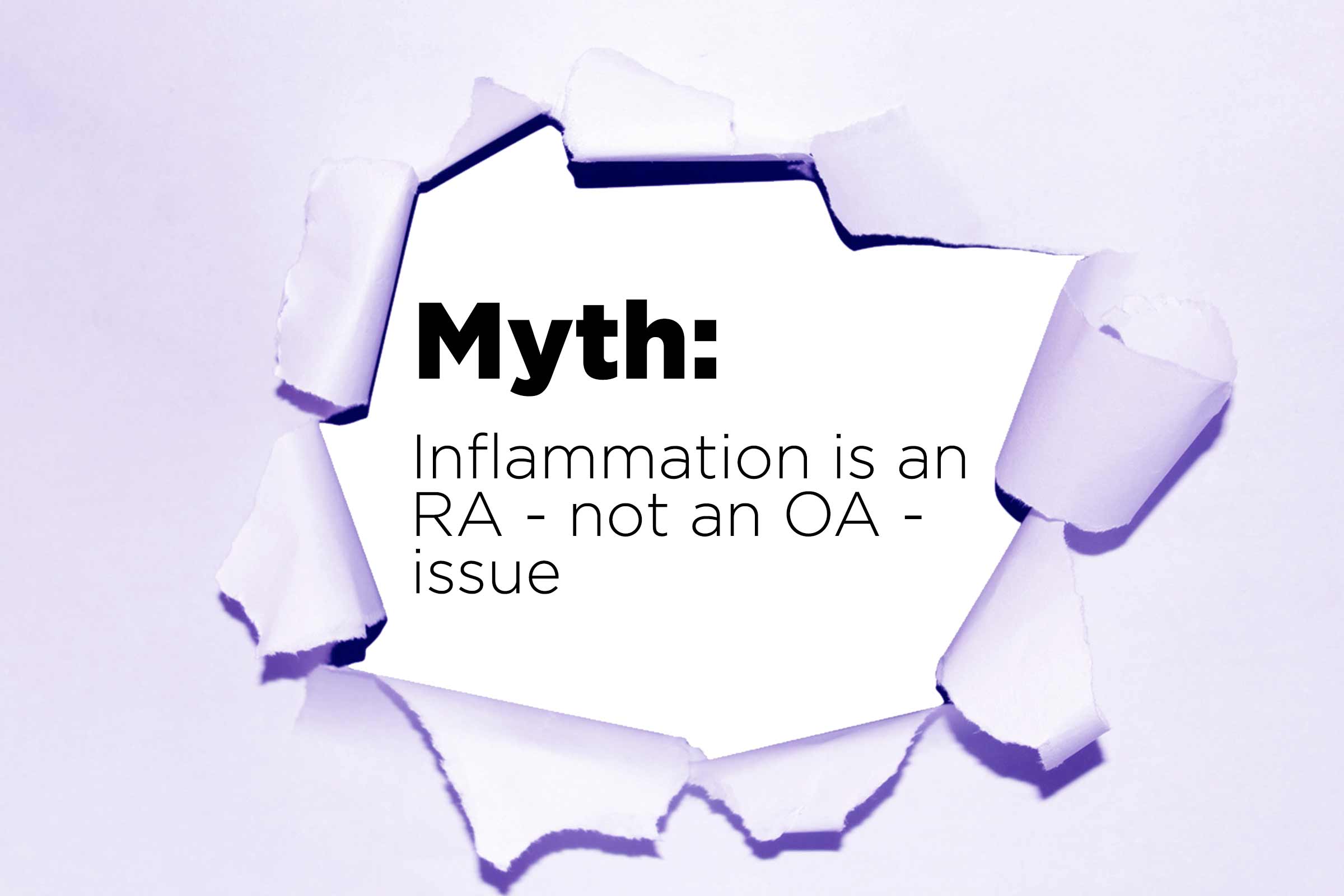This blog aims to discuss the myths surrounding osteoarthritis and debunk them to provide a better understanding of the condition. Osteoarthritis is a common degenerative joint disease that affects millions of people worldwide, particularly those aged 60 and above. Despite its prevalence, many myths and misconceptions surround the condition, causing confusion and hindering effective treatment. This blog seeks to shed light on common osteoarthritis myths and provide accurate information.
What is osteoarthritis and why is it important to debunk myths:
Osteoarthritis is a disease that affects the joints, causing pain, stiffness, and reduced mobility. It occurs when the cartilage cushioning the joint wears down, resulting in bone-on-bone contact and inflammation. While it commonly affects older adults and those with joint injuries, it may also develop in younger individuals. As osteoarthritis is a chronic condition, debunking myths and providing accurate information is crucial to facilitate early diagnosis, effective management, and overall improved quality of life. Common myths surrounding osteoarthritis may cause individuals to delay treatment, dismiss symptoms, or adopt ineffective management strategies. It is essential to expose and challenge these myths to ensure individuals receive the necessary care and support for their osteoarthritis.
Myths exist in almost every aspect of life and healthcare is no exception. This blog section highlights the importance of unveiling osteoarthritis myths. The following sections will focus on identifying and debunking common osteoarthritis myths.
Common Myths on Osteoarthritis
To provide insight into the misconceptions surrounding osteoarthritis, the following bullet points outlined some common myths.
- Osteoarthritis only affects older adults.
- Only individuals with previous joint injuries are at risk of developing osteoarthritis.
- Osteoarthritis is a normal part of aging.
- Exercise worsens osteoarthritis symptoms.
- There is no effective treatment for osteoarthritis.
Debunking Osteoarthritis Myths
The following sections will aim to debunk the common myths of osteoarthritis mentioned above through relevant facts and research.
Myth #1: Osteoarthritis only affects older adults.
Fact: While osteoarthritis is more prevalent among older adults, it may also occur in younger individuals. According to research, over half of people with osteoarthritis are under 65 years old.
Myth #2: Only individuals with previous joint injuries are at risk of developing osteoarthritis.
Fact: While previous joint injuries may increase the risk of developing osteoarthritis, it is not the only risk factor. Age, genetics, and obesity are also factors that increase the likelihood of developing osteoarthritis.
Myth #3: Osteoarthritis is a normal part of aging.
Fact: Osteoarthritis is a disease, not a normal part of aging. While the risk of developing osteoarthritis increases with age, not all older people develop the condition.
Myth #4: Exercise worsens osteoarthritis symptoms.
Fact: Regular exercise is beneficial for those with osteoarthritis, as it helps maintain joint mobility and reduce pain. Low-impact exercise such as walking, swimming, and cycling are recommended for individuals with osteoarthritis.
Myth #5: There is no effective treatment for osteoarthritis.
Fact: While there is no cure for osteoarthritis, several effective treatments are available to manage pain and reduce inflammation. Non-pharmacological approaches such as exercise, weight management, and physical therapy are recommended for those with osteoarthritis. Additionally, medication and joint replacement surgeries are available for moderate to severe cases.
In conclusion, this blog section highlighted the importance of debunking myths surrounding osteoarthritis to improve understanding and encourage early diagnosis and effective management. Five common myths were identified, and relevant facts and research were used to debunk them.

Myth 1: Osteoarthritis only affects the elderly
Debunking the myth and looking at the prevalence in younger age groups
Osteoarthritis is often associated with old age, leading to the myth that only the elderly are affected. However, this isn't entirely true. While it is more common among older adults, osteoarthritis may occur in younger individuals. In fact, research suggests that over half of people with osteoarthritis are under 65 years old, with a significant number under the age of 45. Age is just one factor that contributes to the development of osteoarthritis, and genetics, obesity, and previous joint injuries may also increase the risk. It is important to address this myth to ensure that individuals of all age groups receive appropriate care and support for their osteoarthritis.

Myth 2: Osteoarthritis is caused by wear and tear
Understanding the real cause of osteoarthritis
Osteoarthritis is a common joint condition that affects millions of people worldwide. One of the most pervasive myths surrounding osteoarthritis is that it is caused solely by wear and tear on the joints. However, this is not entirely true. While wear and tear can contribute to osteoarthritis, several other factors play a role in its development. Genetics, obesity, joint injuries, and other health conditions such as diabetes can all increase the risk of developing osteoarthritis. It is important to understand the real cause of osteoarthritis to ensure that appropriate preventative measures are taken to reduce the risk of developing this condition. By debunking this myth, individuals can receive proper care and support for their osteoarthritis.

Understanding Bone and Joint Inflammation: Causes, Symptoms, and Treatments
Hip replacement: A surgical procedure that involves replacing a damaged hip joint with an artificial one
Promising Research and Developments for Rheumatoid Arthritis Treatments
Rheumatoid Arthritis in Children: Signs, Symptoms, and Treatment
Overcoming Fatigue and Depression Associated with Rheumatoid Arthritis
The Relationship Between Diet and Rheumatoid Arthritis Management
When to Seek Medical Help for Rheumatoid Arthritis
Key Differences Between Rheumatoid Arthritis and Osteoarthritis
Living with Rheumatoid Arthritis: Coping Strategies and Treatment Options
Understanding the Symptoms and Causes of Rheumatoid Arthritis
Myth 3: Exercise and physical activity make osteoarthritis worse
Exploring the role of exercise and physical activity in osteoarthritis management
Contrary to popular belief, exercise and physical activity can actually benefit individuals with osteoarthritis. While it may seem logical to avoid physical activity to reduce joint pain, inactivity can actually make the symptoms worse. Regular exercise can help to improve joint mobility, strengthen muscles, and reduce inflammation. Studies have shown that exercise can also help to improve mood and reduce stress, which can positively impact overall health. However, it is important to engage in low-impact activities and avoid high-impact exercises that may cause further damage to the joints. Working with a healthcare professional or physical therapist can help individuals create a safe and effective exercise plan. Therefore, debunking the myth that exercise and physical activity make osteoarthritis worse can help individuals better manage their condition.
Myth 4: There is no treatment for osteoarthritis
Highlighting the various treatment options available
It is simply untrue that there is no treatment for osteoarthritis. While there is no cure for the condition, there are several treatment options that can help manage symptoms and improve quality of life. Some of the most common treatment options include:
Medications: Over-the-counter pain relievers and anti-inflammatory medications can help manage pain and inflammation associated with osteoarthritis. Prescription medications may be recommended for more severe cases.
Physical therapy: Exercises designed to strengthen muscles and improve joint mobility can help manage osteoarthritis symptoms.
Injections: Corticosteroid injections can help alleviate pain and inflammation in the affected joint.
Surgery: In severe cases, joint replacement surgery may be recommended to replace the damaged joint with a prosthetic.
It is important for individuals to work with their healthcare provider to determine the most appropriate treatment plan for their specific case. With proper treatment, individuals with osteoarthritis can manage their symptoms and continue to lead fulfilling lives.

Myth 5: Osteoarthritis only affects the joints
Discussing the wider impact of osteoarthritis on overall health
Contrary to this common misconception, osteoarthritis can affect more than just the joints. It can have a significant impact on an individual's overall health and wellbeing. Experiencing chronic pain and limited mobility can lead to feelings of depression and anxiety, as well as difficulty with everyday activities such as bathing, dressing, and walking. This can result in a decrease in quality of life and even an increased risk of falls and other injuries.
In addition, individuals with osteoarthritis may have higher rates of comorbidities, such as cardiovascular disease and diabetes. It is important for those with osteoarthritis to work with their healthcare provider to manage not only joint pain and inflammation but also any related health concerns.
By understanding the wider impact of osteoarthritis, individuals can take proactive steps to manage their condition and improve their overall health and wellbeing.
Myth 6: Osteoarthritis is just a natural part of aging that cannot be prevented
Looking at preventative measures and lifestyle changes that can reduce the risk of osteoarthritis
Many people believe that osteoarthritis is an inevitability of getting older and can't be prevented. However, research suggests that there are steps individuals can take to reduce their risk of developing this condition. By maintaining a healthy weight, exercising regularly, and eating a balanced diet, individuals can reduce the strain on their joints and protect against inflammation. Additionally, avoiding repetitive motions or prolonged kneeling and squatting can help prevent joint damage. Moreover, certain supplements and medications have shown to be helpful in preventing osteoarthritis and managing its symptoms.
It is important to remember that not every case of osteoarthritis is preventable, but individuals can take proactive steps to reduce their risk. By making lifestyle changes and seeking medical support, individuals can improve their chances of preventing and managing this condition.

Myth 7: Joint replacement surgery is the only solution for osteoarthritis
Exploring non-surgical options for managing osteoarthritis
Contrary to popular belief, joint replacement surgery is not the only solution for osteoarthritis. While surgery may be necessary in some cases, there are various non-surgical options that individuals can explore first.
Physical therapy can be a highly effective way to manage symptoms and reduce pain. A physical therapist can work with individuals to develop a personalized exercise routine that strengthens the muscles around the affected joint, reduces stiffness, and increases flexibility. Additionally, certain medications such as anti-inflammatories or injections of hyaluronic acid can help manage pain and inflammation.
Other alternative treatments for osteoarthritis include acupuncture, massage therapy, and chiropractic care. While more research needs to be conducted on the effectiveness of these treatments, some individuals report finding relief through these methods.
In conclusion, joint replacement surgery is not the only option for managing osteoarthritis. With the help of a healthcare provider and a commitment to regular exercise and healthy habits, individuals can explore a range of non-surgical options to manage this condition.


